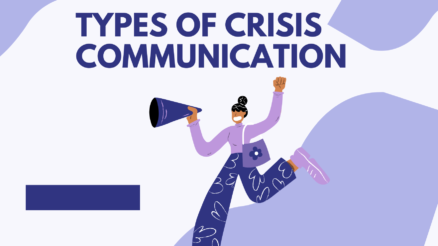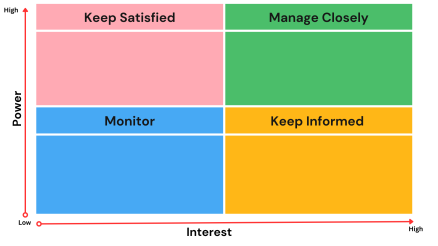For many organizations, restructuring is a necessity for managing their bottom line.
As business change and customer needs evolve, it can be difficult to maintain your current workforce while competing in the competitive environment.
That’s when downsizing and layoff strategies come into play – they can help you strategically adjust headcount while continuing to reach your goals.
In this blog post we’ll discuss why and when it makes sense to use downsizing or layoff strategies, as well as effective tips and potential pitfalls on these often-daunting tasks.
Managers who understand how these strategies work will have more tools at hand for navigating volatile markets and ever-evolving business climates – allowing them to protect their businesses from unnecessary financial risks today and plan successful growth into tomorrow.
03 common strategies of downsizing and layoffs
Downsizing is a process of strategic restructuring that involves reducing the number of personnel in an organization in order to cut costs and meet your financial goals. It is typically used as a last resort measure when other cost-saving strategies have been exhausted.
Layoff is a process of termination of job by employer due to lack of work either permanently or temporarily. Usually it is considered that termination is temporarily but in strict sense there is as such no guarantee that job will be continued in the future.
There are some common strategies of downsizing and layoffs which organizations adopt in present time.
Let’s learn about these strategies.
1. Workforce Reduction
One of the most common strategies is the workforce reduction that is further classified into early retirement incentive plans, voluntary layoffs, involuntary layoffs.
Early retirement incentive plans
Early retirement incentive plans involve offering financial incentives or other attractive benefits to employees who choose to retire early. This can be beneficial for both employers and employees: It reduces the employer’s costs while providing departing employees with a way to transition into their retirement.
This is beneficial for employers looking to minimize their losses, as they can avoid or reduce paying severance and other benefits associated with layoffs.
For the employee, early retirement incentive plans can provide a viable option for those who may not have otherwise had an avenue to transition into retirement. For many employees nearing the end of their careers, early retirement offers an attractive solution due to the financial incentives and other benefits associated with it.
Adding to what was written above, examples of the benefits associated with early retirement incentive plans include increases in pension payments, medical and dental coverage, and other retirement contributions such as 401(k) accounts. Additionally, some employers may also offer tuition reimbursement for classes or seminars related to retirement planning.
Voluntary layoffs
Voluntary layoffs are a form of downsizing strategy in which employees choose to leave the organization for financial compensation. This approach is different from other downsizing options such as early retirement incentive plans and involuntary layoffs, in that the employee is voluntarily making the decision to leave the organization.
Voluntary layoffs can be an attractive option for employees who may not have otherwise had an avenue to transition into retirement. It provides them with an opportunity to potentially seek out better job opportunities that require less effort and time than what they were previously doing in their job.
For example, some employers may offer increased pension payments, medical and dental coverage or additional retirement contributions.
Involuntary layoffs
Involuntary layoffs are a form of downsizing strategy in which employees are let go without their consent. This approach is different from other downsizing options such as early retirement incentive plans and voluntary layoffs, in that the employee has no say in the decision to leave the organization.
Involuntary layoffs typically occur when an employer needs to reduce its workforce due to a decrease in demand, insufficient profit margins, or other financial difficulties. Involuntary layoffs are a difficult and often emotionally charged decision for employers, as well as the individuals affected.
2. Work Redesign
Work Redesign is a downsizing and layoff strategy that focuses on eliminating unnecessary positions instead of reducing the workforce. It is an effective cost-saving measure that can be used to streamline operations, reduce overhead costs, and increase efficiency.
Work Redesign involves analyzing the current roles and responsibilities of the organization’s employees to determine what tasks are truly essential for them to perform, what can be automated, or what processes can be outsourced.
This allows organizations to identify what positions or roles can be eliminated, what tasks can be performed by existing employees, what processes can be automated or outsourced, and what areas of operations need to be streamlined. This type of downsizing strategy helps to eliminate excess positions without necessarily reducing the overall size of the workforce.
3. Systematic Approach
Systematic approach of downsizing is a strategy that involves taking a step-by-step approach to identify what role or positions are not needed, what tasks can be automated, what processes can be outsourced, and what areas of operations need to be streamlined.
Systematic approach of downsizing is an effective strategy for organizations to analyze their current structures, roles, and responsibilities in order to identify what positions and tasks are not essential to the organization. This method can help organizations streamline their operations, reduce expenses and overhead costs, as well as increase efficiency.
Final Words
As difficult a decision as it is to make, downsizing your workforce or implementing a layoff can be necessary for the survival of your business. Workforce reduction, work redesign and systematic approach are all common strategies used in these situations. Each has its own pros and cons that you should consider before making any decisions. What other factors do you think are important to keep in mind when deciding whether or not to downsize your workforce?



